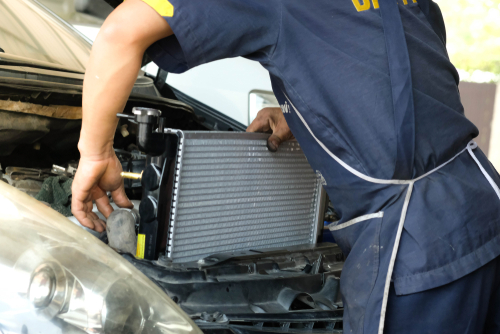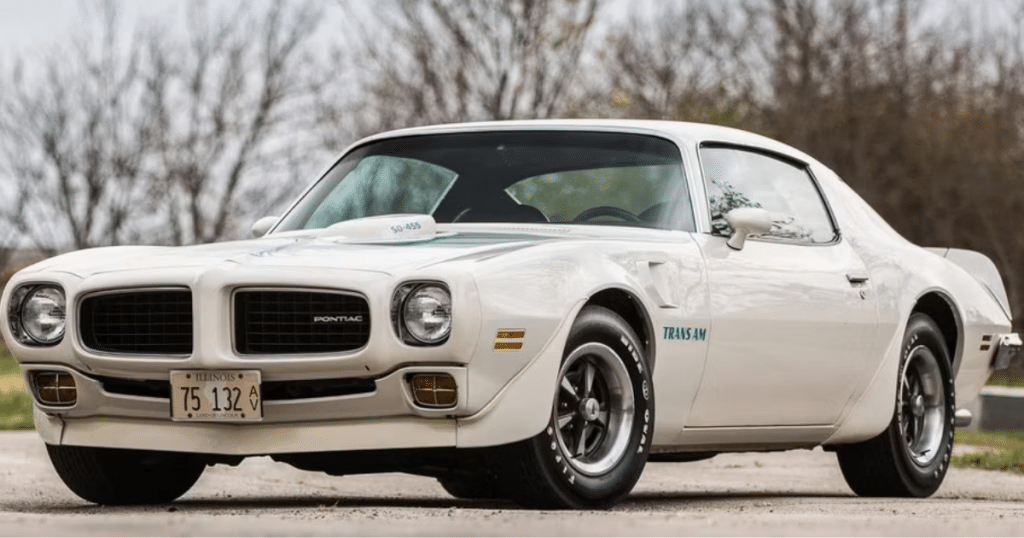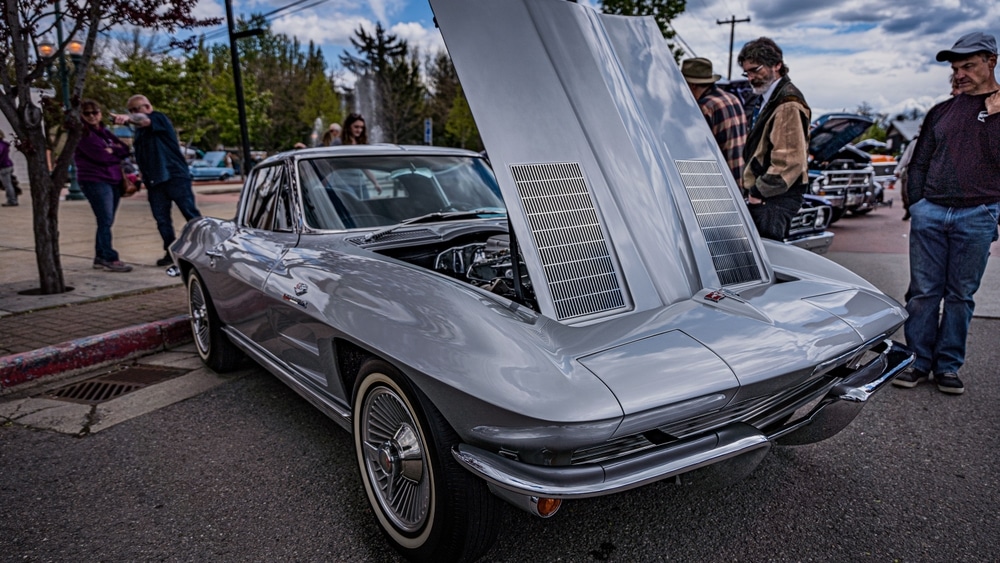Have you ever walked out to your car and noticed a suspicious puddle underneath?
Don’t panic just yet!

A car leaking water when parked is often nothing to worry about and can be a normal part of your vehicle’s operation.
Water dripping from your car can come from various sources. The most common culprit is condensation from your air conditioning system.
This is perfectly normal and happens when you’ve been running the AC on a hot day.
You’ll typically see this leak on the passenger side of the car, near the front.
But what if it’s not just water?
Sometimes, what looks like water could be something more serious, like coolant or brake fluid.
It’s important to know the difference to keep your car running smoothly.
Let’s dive into the wet and wild world of car leaks!
Key Takeaways
- Water leaks are often harmless condensation from your AC system
- Check the color and consistency of the fluid to identify potential issues
- Regular maintenance can prevent serious leaks and keep your car running smoothly

Car Leaking Water When Parked: Diagnosis Decision Tree
- Is the liquid clear and odorless?
- Yes → Go to step 2.
- No → This is likely not water; check for other fluid leaks (e.g., oil, coolant, transmission fluid).
- Is the leak directly under the engine area?
- Yes → Go to step 3.
- No → Go to step 6.
- Does the car have air conditioning or have you recently used the A/C?
- Yes → Possible Cause: Condensation from the air conditioning system.
- Solution: This is normal; condensation drips from the A/C evaporator. No action required.
- No → Go to step 4.
- Yes → Possible Cause: Condensation from the air conditioning system.
- Have you been using the heater or defroster?
- Yes → Possible Cause: Water from the heater core or A/C system.
- Solution: Condensation from the A/C or defroster may be normal, but if the leak is excessive, check for a clogged evaporator drain tube.
- No → Go to step 5.
- Yes → Possible Cause: Water from the heater core or A/C system.
- Is the car leaking water even when the A/C or heater hasn’t been used?
- Yes → Possible Cause: Coolant system issue, such as water pump or hoses leaking.
- Solution: Inspect the cooling system for leaks (though water is not typically the main coolant, check for a coolant leak that may appear watery). Have it inspected by a mechanic if necessary.
- No → The leak is likely normal A/C condensation.
- Yes → Possible Cause: Coolant system issue, such as water pump or hoses leaking.
- Is the leak coming from the exhaust area?
- Yes → Possible Cause: Condensation from the exhaust system.
- Solution: This is normal. Water vapor from exhaust gases condenses and drips from the tailpipe, especially after short trips or in colder weather.
- No → Go to step 7.
- Yes → Possible Cause: Condensation from the exhaust system.
- Is the leak around or inside the car (interior)?
- Yes → Go to step 8.
- No → Go to step 9.
- Has there been recent heavy rain or have you washed the car?
- Yes → Possible Cause: Clogged sunroof or window drains, or weatherstripping failure.
- Solution: Check for clogged drains around the sunroof or windows. Ensure seals around doors and windows are intact. Clean or repair as needed.
- No → Possible Cause: Leaking heater core or windshield seal.
- Solution: If no rain or exterior source, check for internal leaks such as from the heater core or worn seals. Have a mechanic inspect.
- Yes → Possible Cause: Clogged sunroof or window drains, or weatherstripping failure.
- Is the water leaking from around the trunk or rear area?
- Yes → Possible Cause: Clogged trunk drain or worn-out trunk seal.
- Solution: Check and clean trunk drains, or inspect the trunk seal for damage and replace if necessary.
- No → Go to step 10.
- Yes → Possible Cause: Clogged trunk drain or worn-out trunk seal.
- Is the car parked on uneven ground?
- Yes → Possible Cause: Water may accumulate from normal condensation and drain in unusual spots.
- Solution: This may be normal, especially after using the A/C or exhaust system. Monitor the location of future leaks.
- No → Possible Cause: General water pooling from A/C, condensation, or exterior conditions.
- Solution: Monitor if the leak persists. If it worsens or appears mixed with other fluids, have it inspected.
Decoding the Puddle: Identifying the Fluid

Finding a puddle under your car can be alarming, but don’t panic just yet!
Let’s dive into the world of automotive fluids and learn how to identify what’s leaking from your vehicle.
From Clear to Colored: What Your Car’s Leaking
Is that clear puddle under your car just harmless water?
Before you breathe a sigh of relief, let’s investigate. Clear liquid could be condensation from your AC system, especially if you notice it after running the air conditioning.
But wait, there’s more!
If the liquid has a slight tint or unusual color, you might be dealing with something else entirely.
Time to put on your detective hat and examine the evidence.
Grab a piece of white paper or cardboard and dab it in the puddle. This will help you identify the color more accurately.
Remember, different fluids have different hues!
The Usual Suspects: Coolant, Oil, and Other Fluids
Now that you’ve got your color sample, let’s line up the usual suspects:
- Green, orange, pink, or blue: You might have a coolant leak. Time to check your radiator and hoses!
- Dark brown or black: This could be engine oil. Better tighten that oil pan drain plug!
- Red or brown: Uh-oh, your transmission fluid might be making a break for it.
- Light brown or clear: Power steering fluid trying to steer clear of your car?
- Clear to yellow: Brake fluid. This one’s serious, folks!
Remember, a small drip might not be cause for alarm, but don’t ignore it if it’s brake fluid or gasoline. Your wallet (and your car) will thank you for catching leaks early!
Under the Hood: Engine and Coolant System
Ever notice a puddle under your car that’s not from rain?
It might be time to pop the hood and play detective. Let’s dive into the mysterious world of coolant leaks and heater core hiccups.
Coolant Leak: More Than Just Water
You might think that puddle is just water, but it could be your car’s lifeblood – coolant. Coolant leaks can occur in various parts of your engine’s cooling system.
Check your coolant reservoir – is it looking a bit thirsty? That’s a telltale sign.
Next, grab your trusty flashlight and look for wet spots around the radiator, hoses, or water pump.
It’s like a game of “I Spy,” but with potentially expensive consequences.
Remember, coolant isn’t just water – it’s a special mixture that keeps your engine from throwing a temperature tantrum.
If you spot a leak, don’t ignore it!
Your engine could overheat faster than a cat on a hot tin roof. And trust me, replacing an engine is about as fun (and cheap) as buying a small island.
Heater Core Havoc: When Heat Transfers to Leaks
Your heater core might be small, but it can cause big problems.
This tiny radiator for your car’s interior can spring a leak, leaving you with a wet floor and foggy windows.
It’s like your car decided to install its own sauna – not cool, car. Not cool.
A bad heater core can leak even when your car’s parked.
You might notice a sweet smell (that’s the antifreeze) or your windows fogging up faster than a mirror in a steamy bathroom.
If you suspect your heater core is the culprit, check your coolant levels.
Low coolant could mean it’s escaping through your heater core. Also, feel your carpets – if they’re damp, your heater core might be playing Slip ‘N Slide with your antifreeze.
Beyond the Engine: Other Fluid Dynamics

Your car’s a complex beast, and it’s not just the engine that can spring a leak.
Let’s take a peek at some other sneaky spots where fluids might decide to make a break for it.
Transmission Tales: Following the Fluid Trail
Ever notice a reddish puddle under your car?
That’s your transmission fluid waving hello. A transmission fluid leak usually shows up right in the middle of your parking spot, like it’s trying to mark its territory.
If you’ve just had a transmission service, keep your eyes peeled. Sometimes those pesky mechanics forget to tighten things up properly.
But don’t blame the shop just yet – your transmission could be crying out for help all on its own.
Check your dipstick (the transmission one, not your neighbor). If it’s low, you might have a leak on your hands.
Time to get your detective hat on and follow that fluid trail!
Brakes and Beyond: Fluids You Shouldn’t Ignore
Now, let’s talk about brake fluid. This stuff is like liquid gold for your stopping power.
If you see a clear, slightly yellowish fluid near your wheels, don’t ignore it. That’s your brakes begging for attention.
A brake fluid leak is no laughing matter.
It can turn your Sunday drive into a white-knuckle thrill ride faster than you can say “No brakes!”
Check your brake fluid reservoir under the hood. If it’s low, you’ve got a problem.
Don’t try to top it off and call it a day. Get your car to a mechanic pronto. Your brakes are one system you don’t want to gamble with.
Seals and Shields: The Exterior Defense
Your car’s exterior defenses against water intrusion are crucial for keeping your ride dry.
These unsung heroes work tirelessly to keep moisture at bay, but when they fail, you might find yourself in a soggy situation.
Weatherstripping Woes: When Seals Surrender
Ever notice those rubber strips around your car doors? That’s weatherstripping, your first line of defense against pesky water droplets.
When these seals start to wear out, it’s like leaving the front door open during a rainstorm.
You’ll want to give your weatherstripping a good once-over now and then. Look for cracks, tears, or sections that have come loose.
If you spot any issues, it’s time for some DIY action. Replacing weatherstripping can be a quick fix that saves you from a wet posterior.
Pro tip: A little silicone lubricant can work wonders on dried-out seals. It’s like giving your car a drink of water when it’s parched!
Sunroof and Door Dilemmas: Drainage and Seals
Your sunroof might be great for letting in some fresh air, but it’s also a potential water entry point.
Those little drain holes and tubes around your sunroof aren’t just for show – they’re your sunroof’s personal plumbing system.
When these get clogged, it’s like a backed-up sink. Water has nowhere to go but inside your car.
You can clear these out with a blast of compressed air or a careful poke with a pipe cleaner.
Don’t forget about your doors!
The door membrane is like a raincoat for your car’s innards.
If it gets torn, water can sneak in faster than you can say “rust bucket.” A little waterproof tape can patch things up in a pinch.
Troubleshooting Tips and Fixes
Got a puddle under your parked car? Don’t panic!
Let’s dive into some handy tricks to pinpoint that pesky leak and plug it up before your ride turns into a submarine.
DIY Diagnostics: Finding the Leak Source
First things first, you’ll need to play detective.
Start by checking under your car after it’s been parked for a while. Is the liquid clear and odorless? Congrats, it’s probably just water from your AC system. No worries there!
But if you see colored liquid, it’s time to get serious.
Grab a flashlight and peek under the hood. Look for damp spots or drips around hoses, the radiator, and water pump.
Don’t forget to check your car’s floor mats too – they might be hiding a sneaky interior leak.
Pro tip: Place some cardboard under your parked car overnight. In the morning, you’ll have a map of where the leak’s coming from. It’s like CSI for cars!
Patch It Up: Solutions for Stopping Leaks
Found the culprit? Time to plug that hole!
If it’s just your AC dripping, relax – that’s normal. Your car’s just sweating out the humidity.
For other leaks, start simple. Tighten any loose clamps or connections.
If you spot a small hole in a hose, a bit of automotive sealant might do the trick.
Just remember, this is a temporary fix – you’ll want to replace that hose soon.
Dealing with a leaky windshield seal? That’s a job for the pros, my friend.
You’ll need a new seal and proper installation to keep the rain out.
Remember, if you’re not comfortable poking around under the hood, there’s no shame in calling a mechanic.
Better safe than sorry when it comes to your four-wheeled friend!
Frequently Asked Questions
Water leaks in parked cars can be puzzling. Let’s address some common concerns about those mysterious puddles and drips you might spot underneath your vehicle.
Why might my vehicle be leaving a puddle of clear liquid whenever it’s stationary?
You’re not imagining things – that puddle is real!
The most likely culprit? Your air conditioning system. When you run the AC, it removes moisture from the air, which has to go somewhere. That somewhere is usually right under your car.
Is it normal for my car to discharge water even if I haven’t used the air conditioning?
You might be scratching your head, thinking, “But I haven’t even touched the AC!”
Don’t worry, your car isn’t possessed. This could be condensation from your exhaust system. It’s perfectly normal, especially on cooler mornings.
What could cause water to drip from the front area of my automobile?
If you’re seeing drips from the front, you might want to pop the hood.
It could be your coolant system playing tricks on you. Check your coolant reservoir and look for any wet spots around the radiator or hoses.
Just remember, let the engine cool before you start poking around!
Should I be concerned about water dripping from under the engine of my car?
Now, if you’re seeing water under the engine, it’s time to put on your detective hat.
This could be a sign of a leaky water pump or gasket. It’s not always a dire situation, but it’s worth getting checked out to avoid any surprise sauna sessions for your engine.
What’s the deal with water collecting under the passenger side when my car is just chilling on the drive?
Ah, the mysterious passenger-side puddle!
This is often your AC system’s favorite spot to leave its mark. The AC’s drain tube is usually located on this side, so don’t be alarmed if you see a small pool forming there after a drive.
Can excessive water leakage from my car indicate a potential problem?
If you’re seeing more water than a small garden fountain, it might be time to raise an eyebrow.
Excessive leakage could indicate issues with your cooling system or even a cracked engine block.
If in doubt, get your trusty mechanic to take a look. Better safe than sorry!
